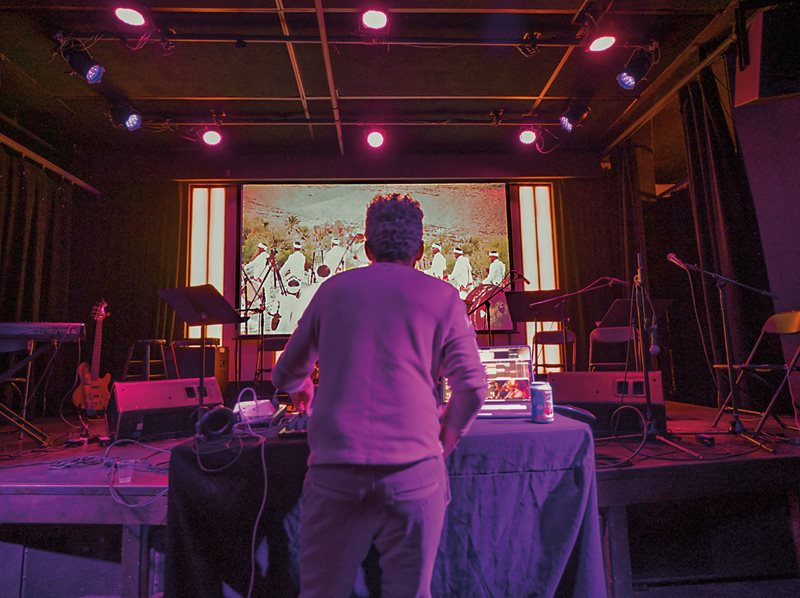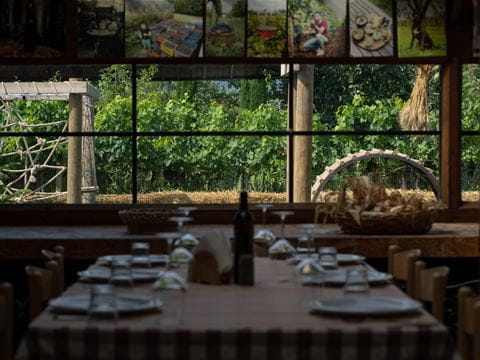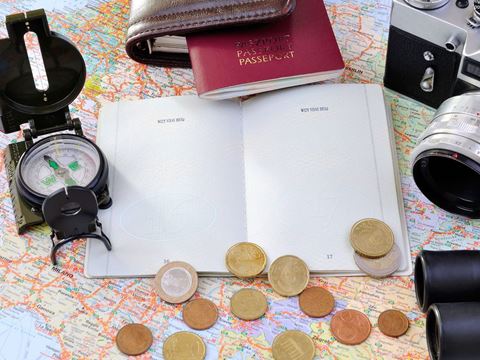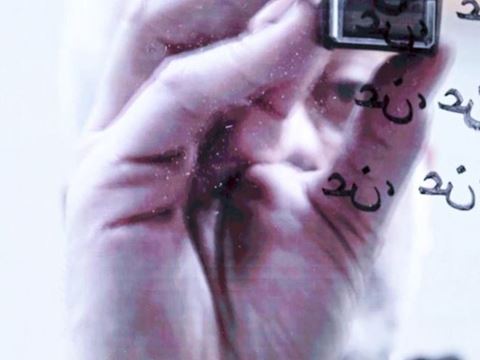
Interpret Tradition in Transition: Remix⟷Culture’s Role in Reviving and Reimagining Folk Music
Media Studies
Art
North Africa
Americas
Investigate how traditional melodies gain new life through Belyamani’s blend of cultural preservation and cutting-edge remix artistry.
The following activities and abridged text build off "Record, Remix, Repeat," written by Kay Hardy Campbell and photographed by David H. Wells.
WARM UP
Scan the article’s photos and captions to predict its main idea.
IF YOU ONLY HAVE 15 MINUTES ...
Identify Belyamani’s vision for the future of music that led to founding Remix⟷Culture.
IF YOU ONLY HAVE 30 MINUTES ...
Evaluate key events and influences shaping Belyamani’s journey from classical pianist to “orchestra conductor from the future.”
VISUAL ANALYSIS
Analyze Belyamani’s video to assess the inspirations and goals behind Remix⟷Culture.
Directions: As you read, watch for highlighted vocabulary words. Use context clues to guess their meanings, then hover on each word to check if you’re right. After reading, answer the questions at the bottom of the page.
Record, Remix, Repeat
Hatim Belyamani grins nervously as he and nine other musical artists take their places on the small stage. Applause surges from the sold-out, standing-room-only crowd of 200 people at Public Records, in Brooklyn. Shaking off nerves, Belyamani slips behind his digital mixing board and introduces his fellow performers. Together, they have prepared a musical journey called tanfis, an Arabic word for spiritual release, like letting go of a long-held breath.
He pauses. If all goes well, this collaboration of acoustic musicians, DJs and remix artists will weave a compelling blend of live music, electronic dance and immersive video. If not, Belyamani and his nine collaborators might find themselves playing to empty room by night’s end. A deep breath, another smile. “This is really a cocreation of all 10 of us, and we really hope you stay for the full three hours,” he tells the crowd.

The set opens with a reading of a 14th-century Persian poem, followed by a heartbeat of sampled drumming. One of two percussionists joins in, then the qanan, kval and bass add their voices. On a wall, videos playing the original pieces flicker, while Belyamani—his own words, “an orchestra conductor from the future”—remixes remixing recordings in real time.
As the temple builds, he studies the crowd. The music catches hold: listeners, rapt, lean forward, begin to dance, their bodies pulsing withs the beat. When the rhythm fades, their movements slow in turn.
All of this is powered by Remix⟷Culture, the New York-based nonprofit Belyamani founded to record, film, digitally remix and disseminate the sounds of musicians working in underrepresented acoustic traditions worldwide.
The goal: make these musical forms accessible to new listeners, musicians and remixers by posting recordings and videos on organization’s website. Remixers, including Belyamani himself, can download samples for free and use them for noncommercial projects, provided original artists are credited. Commercial use requires a fair-trade agreement with Remix⟷Culture, ensuring net proceeds are shared equally between artists and the nonprofit. As founder and executive director, of the organization, Belyamani is, in many ways, Remix⟷Culture itself.

Belymani grew up in a musical family in Casablanca, Morrocco. His father, a radiologist, often pulled out the oud at parties and family gatherings, while he and his two brothers studied piano from an early age at Casablanca’s Conservatoire de Musique, becoming skilled classical pianists. At home, his parents played recordings of an eclectic mix of Rachmaninov, The Beatles, Duke Ellington and local Moroccan music.
As a teenager, Belyamani largely dismissed Moroccan music, until one night in Marrakesh when he heard former Led Zeppelin frontman Robert Plant sing a Gnawa tune. The performance shifted his perspective. He began reflecting on the music of his own culture and how it fit alongside the sounds he was raised with.
A top student at the Casablanca American School, he graduated as valedictorian and entered Harvard University in 1995. While majoring in social studies, he explored music courses, drawn especially to composing—though he found it challenging without an orchestra. That changed when a roommate introduced him to electronic music, with its synthesizers and sound samples. “I realized I could hear my music without needing an orchestra at all,” he says.
Still electronic pop music left him cold until he heard Icelandic singer Bjork’s heavily electronic 1997 album, Homogenic. Bjork’s use of computers to create “rhythms that were alive and that blended seamlessly with string sections and with live vocals so the electronic and acoustic were harmonious. I’d never heard anything like it,” Belyamani says.
Although he knew he wanted to make music his life’s work, after graduating in 2000, Belyamani moved to Silicon Valley, joining Apple in 2003. Apple was his day job; After hours, he sought out music of his own culture to feel closer to home. In 2012 he returned to Morocco. “When I quit my job, I had a very strong sense that I needed to reconnect with my family, with my home country, with my community there. I felt so disconnected in the US, and that feeling extended to my music.”
Back in Casablanca, Belyamani set out to discover more of his musical roots. Borrowing his mom’s car, he packed a couple of microphones and a video camera, then drove to Khenifra, a north-central city framed by the Atlas Mountains. There, he visited a local music shop, hoping the owner would simply point him to musicians he could record. Instead, the man refused—at least until Belyamani understood the music’s foundation. He gave him a crash course not only in the sounds but also in the Amazigh culture that had created them. Once convinced that Belyamani grasped their significance, the shop owner introduced him to local musicians to film and record. That education became a turning point, shaping his core values and embedding in Remix⟷Culture its commitment to honoring the source and context behind the music.
After returning from Morocco, Belyamani landed in New York and impulsively applied for a small grant to create an art installation at Priceless, a multiday music-and-arts festival held in Belden, in the Sierra Nevada foothills of Northern California. Winning the grant shocked him. Tasked with creating something that would engage passersby for the 2012 festival, he turned to his Khenifra recordings and photographs, designing an interactive program that allowed visitors to remix the original songs and images. The concept was a hit, and the germ of Remix⟷Culture began to take root.

“Even in high school I was writing about creating some new form of universal music where you could recognize the different traditions somehow, but together they would create something new, something unifying,” says Belyamani, who produces his videos from a home studio.
Soon Belyamani was back in Morocco, seeking out more musicians to film and record. He hired a small recording and video crew, who were struck by how willing people were to be documented—but they quickly learned to be ready at a moment’s notice. No group wanted a second take. They skipped sound checks, launched straight into 20-minute performances and played only once.
That was just the first trip. Over the next few years, Belyamani funded the filming of about a dozen groups from around the world before officially establishing Remix⟷Culture as a nonprofit in 2016. In addition to Morocco, the team traveled to Brazil, China, Hungary, Lebanon, and Albania. Back in the US, sound engineers synchronized the mastered audio with the visuals to produce short clips remix artists could use for free. Eventually, they began posting these clips online, opening them to a global audience.

Among Remix-Culture’s international live recordings are Suya in Beijing above and the band Maracatu de Baque Solto Estrela de Ouro in Condado, Brazil below.

Khalil Mounji, a Moroccan remix artist and Gnawa performer who used Remix⟷Culture samples found himself enamored by the samples offered. “Their website is a treasure trove of creativity,” he says. “I am so grateful for their commitment to preserving and celebrating the beauty of cultures from around the world, and for providing artists like myself with the tools to create and express ourselves in new and exciting ways.”

Using music production software, Belyamani organizes Remix-Culture’s dozens of digital audio sample packets—from loops and single sounds to multi-instrumental clips—that are all available online free to anyone who commits to sharing part of their profits with both Remix-Culture and the recording artists.
The pandemic curtailed Remix-Culture’s globetrotting in 2020, but staying put revealed new opportunity. Brooklyn, Belyamani realized, teems musicians from around the world, who play traditional and folk music in small venues and recording spaces only miles from his home.
Back at the concert, the show has come off without a hitch. Belyamani can’t determine if anyone else has experienced a spiritual release, but he is ecstatic. After all, not only has he shown audiences the possibilities of using Remix⟷Culture ‘s music and video samples, he has also realized his long-held dream of blending many musical traditions into a unified experience.

Although this was the first Tanfis performance, the crowd’s reaction assures him it won’t be the last. The nonprofit’s sample archives keep opening new possibilities. Recently, the nonprofit won a $25,000 National Endowment for the Arts grant to fund more projects and performances. “We’ve come a really long way,” he says. “For the first time, Remix⟷Culture is building something solid, and we’re poised to be able to go further and deeper into our work.”
READING QUESTIONS
Question: Which elements does Belyamani combine in his live performances, and what effect does he say this creates for audiences?
Immersive visuals, live acoustic music, electronic dance and videos; he says this blend creates a unified, compelling experience.
Question: Why do you think Belyamani created Remix⟷Culture as a nonprofit instead of a commercial venture?
To make underrepresented music traditions freely available to new listeners, musicians and remixers, encouraging creative reuse without cost barriers.
Question: Why do you think the author chose to end the article with Belyamani reflecting on the NEA grant and the future of Remix⟷Culture?
To leave readers with a sense of momentum and optimism, showing the organization’s growth and readiness to expand its mission.
Other lessons

Breaking Bread: Using Food As a Teaching Tool
For the Teacher's Desk
Using food as a teaching tool, students widen their global understanding of other cultures while deepening their connection to the world.
Aramco World Learning Center: No Passport Required
For the Teacher's Desk
Project-based learning lies at the heart of AramcoWorld’s Learning Center. Link its resources into classroom curriculum, no matter the subject.
The Past Is Told by the Victors: Exploring the Other Side of History
Art
History
Fertile Crescent
Explore how history’s narrative is dictated by the victors and its affect on our understanding of it.